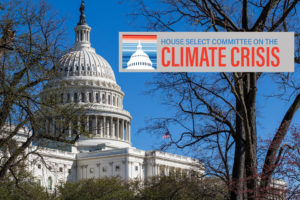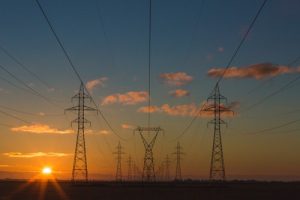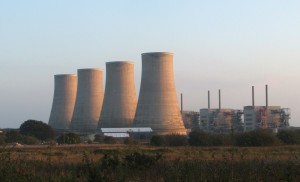66 item(s) were returned.
United States Senator, State of Alaska
Chairman, Senate Energy and Natural Resources Committee
Preface from OurEnergyPolicy In the time since our November 2019 critical minerals discussion, COVID-19 has decimated global supply chains. Factory shutdowns in China, which accounts for 40–50% of the global wind power supply chain, have caused supply shortages of wind turbine components and massive financial losses, threatening current U.S. projects. China’s outsized market share is also affecting the solar market, although some analysts say a U.S. tariff on imported solar panels may have blunted the impact. “If coronavirus has shown us anything, it’s that we are far too reliant on China and other countries for key minerals like… [more]
View InsightThe U.S. House of Representatives Select Committee on the Climate Crisis is requesting information around policies that Congress should adopt to solve the climate crisis and adapt to the impacts of climate change. Committee staff told us they would welcome feedback from OEP experts. Four specific questions from the committee’s request for information are outlined below. We will compile and send to the committee substantive comments posted to this discussion by November 11. U.S. electricity generation from wind power is more than 7 times higher today than it was in 2017, and U.S. solar power generation is 100… [more]
View InsightCEO
Milepost Consulting
New and emerging innovations in renewable energy suggest the real possibility—probability even—of a future where everyone has access to abundant clean energy. While supporting these advancements is vital to a sustainable future, it is perhaps more crucial that our legislators create and codify solid energy efficiency standards that can reduce our carbon emissions. In 2018, roughly 69% of energy produced in the United States was lost, most often in the form of waste heat, such as exhaust from cars and furnaces. As we shift to new sources of power generation, policy work around minimizing energy waste will help to show… [more]
View InsightExecutive Director
Northwest Public Power Association
During an era of unprecedented change in the energy industry, hydropower offers a renewable and emission-free power source that boasts some unique attributes. Not only does hydropower provide reliable base-load generation, but it also has a high level of flexibility that enables storage and ramping capability. These qualities match well with the increasing need to balance intermittent renewable generation sources, such as wind and solar. At just seven percent of total electricity generation in the U.S., hydropower already displaces about 200 million metric tons of carbon dioxide emissions that would otherwise come from thermal generation. It is efficient in its… [more]
View InsightSenior Scientist
UFA Ventures, Inc.
In the United States, public debates surrounding energy policy focus on generation, carbon emissions, and cost. But all is for naught if the energy infrastructure that carries power isn’t appropriate for the changing energy mix or can’t keep up because it’s crumbling. With new technologies rising faster than sea level on a hot planet, the United States is in the midst of the biggest energy boom in 60 years. We have more natural gas, coal, and uranium than we need for several hundred years; new and better solar cells; new biofuel technologies to replace ethanol; and even more oil than… [more]
View InsightEnergy Project Campaign Manager, Policy Analyst
Texas Public Policy Foundation
The Production Tax Credit (PTC), a federal renewable energy subsidy, is a $24-per-megawatt-hour credit based on energy production rather than demand. That means those who produce renewable energy can receive the credit regardless of whether or not that electricity is actually needed. The incentive is so immense that at peak hours of output wind producers can actually pay retail electric providers, the companies that deliver the energy to homes and businesses, to take their product. This “negative pricing” scheme caused by the PTC and other subsidies is having serious consequences.The instability it causes can push out the energy producers that keep… [more]
View InsightCommunications Director
Vote Solar
In May, the California Energy Commission unanimously approved the nation’s first commitment to putting solar on qualifying new home construction starting in 2020 – a move that’ll be good for our cost-of-living and our climate alike. Building solar on new homes is consistent with California’s zero net energy goals for new buildings, and it’s a great way of getting rooftop solar built cheaply for customers. When solar PV is installed at the time of construction, you get economies of scale and save big on non-hardware costs like customer acquisition, permitting and financing. Assuming modules are 40 cents/W and the other… [more]
View InsightLast Monday, Scott Pruitt announced that the Environmental Protection Agency will now consider the burning of biomass for energy to be carbon neutral. The agency memo points out that the use of biomass for energy can bolster domestic energy production, reduce wildfire risk, and help ensure that forests continue to remove carbon from the atmosphere. The memo further states that “Managed forests improve air and water quality while creating valuable jobs and thousands of products that improve our daily lives.” Despite the ruling, the debate continues over the carbon neutrality of biomass. Scientists and various non-governmental organizations have raised concerns… [more]
View InsightConsultant
Independent
The United States and world are facing a crisis of enormous magnitude if the global warming problem is not addressed properly. Every country in the world, except the current U.S. administration, supports the Paris climate agreement goal limiting the rise in global average surface temperature to 2°C (3.6°F). The consequences of failure could be a catastrophic future: Flooding from rising sea levels, more severe hurricanes/heat waves/wildfires, crop failures and droughts, and greater stress on an already aging infrastructure. Climate scientists generally agree carbon emissions should be reduced to near zero by mid-century to avert catastrophic global warming. But the voluntary… [more]
View InsightPresident
Kadak Associates, Inc.
There is an inconvenient and uncomfortable truth that nuclear energy is a significant non-CO2 source of electrical power in the U.S. Despite the dramatic expansion of solar and wind, these alternative forms of energy only provide 15% of non-CO2 emitting power nationwide. Nuclear energy on the other hand, provides 63% of all CO2-free sources. Often when a utility decides to shut down a nuclear plant it is replaced by natural gas. But replacing nuclear with “clean” natural gas only adds to the global CO2 load. In fact, each 1,000 megawatts of nuclear power replaced by natural gas adds 3.6 million… [more]
View Insight








